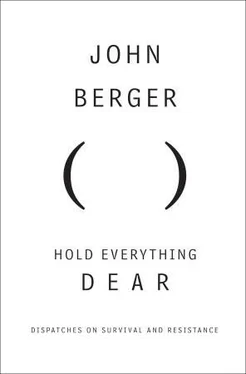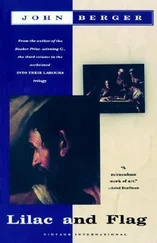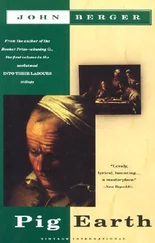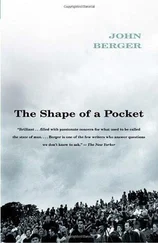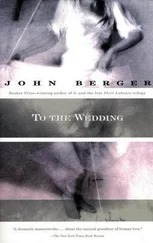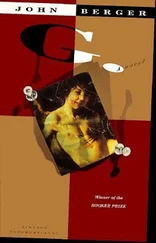The commentary over the black-and-white film is spoken by two anonymous voices; in fact the voices of two of his friends: the painter Renato Guttuso and the writer Giorgio Bassani. One is like the voice of an urgent commentator, and the other the voice of someone who is half-historian and half-poet, a soothsayer's voice. Among the major news items covered are the Hungarian revolution of '56, Eisenhower running a second time for President, the coronation of Queen Elizabeth, Castro's victory in Cuba.
The first voice informs us and the second one reminds us. Of what? Not exactly of the forgotten (it is more cunning), but rather of what we have chosen to forget, and such choices often begin in childhood. Pasolini forgot nothing from his childhood — hence the constant coexistence in what he seeks of pain and fun. We are made ashamed of our forgetting.
The two voices function like a Greek chorus. They cannot affect the outcome of what is being shown. They do not interpret. They question, listen, observe and then give voice to what the viewer may, more or less inarticulately, be feeling.
And they achieve this because they are aware that the language being shared by actors, chorus and viewer is the depot of an age-long common experience. The language itself is complicit with our reactions. It cannot be cheated. The voices speak out, not to cap an argument, but because it would be shameful, given the length of human experience and pain, if what they had to say was not said. Should it go unsaid, the capacity for being human would be slightly diminished.
In Ancient Greece the chorus was made up, not of actors, but of male citizens, chosen for that year by the chorusmaster, the choregus . They represented the city, they came from the agora , the forum. Yet as chorus they became the voices of several generations. When they spoke of what the public had already recognized, they were grandparents. When they gave voice to what the public felt but had been unable to articulate, they were the unborn.
All this Pasolini does single-handed with his two voices as he paces, enraged, between the ancient world, which will disappear with the last peasant, and the future world of ferocious calculation.
At several moments the film reminds us of the limits of rational explanation, and of the frequent vulgarity of terms like optimism and pessimism.
The best brains of Europe and the USA, it announces, are theoretically explaining what it means to die (fighting with Castro) in Cuba. Yet what it really means to die in Cuba — or Naples or Seville — can only be told with pity, in the light of a song and in the light of tears.
At another moment it proposes that all of us dream of the right to be like some of our ancestors were! And then adds: Only revolution can save the past.
La Rabbia is a film of love. Yet its lucidity is comparable to that in Kafka's aphorism:‘The Good is, in a certain sense, comfortless.'
This is why I say Pasolini was like an angel.
The film lasts only an hour, an hour that was fashioned, measured, edited forty years ago. And it is in such contrast to the news commentaries we watch and the information fed to us now, that when the hour is over, you tell yourself that it is not only animal and plant species which are being destroyed or made extinct today, but also set after set of our human priorities. The latter are systematically sprayed, not with pesticides, but with ethicides — agents that kill ethics and therefore any notion of history and justice.
Particularly targeted are those of our priorities which have evolved from the human need for sharing, bequeathing, consoling, mourning and hoping. And the ethicides are sprayed day and night by the mass news media.
The ethicides are perhaps less effective, less speedy than the controllers hoped, but they have succeeded in burying and covering up the imaginative space that any central public forum represents and requires. (Our forums are everywhere but for the moment they are marginal.) And on the wasteland of the covered-over forums (reminiscent of the wasteland on which he was assassinated by the Fascists) Pasolini joins us with his Rabbia, and his enduring example of how to carry the chorus in our heads.
A Master of Pitilessness? (May 2004)
VISIT THE FRANCIS BACON exhibition at the Maillol Museum in Paris. Read Susan Sontag's book Regarding the Pain of Others . The exhibition represents succinctly a long life's work. The book is a remarkably probing meditation about war, physical mutilation and the effect of war photographs. Somewhere in my mind the book and exhibition refer to one another. I'm not yet sure how.
As a figurative painter, Bacon had the cunning of a Fragonard. (The comparison would have amused him, and both were accomplished painters of physical sensation — one of pleasure and the other of pain.) Bacon's cunning has understandably intrigued and challenged at least two generations of painters. If during fifty years I have been critical of Bacon's work, it is because I was convinced he painted in order to shock, both himself and others. And such a motive, I believed, would wear thin with time. Last week, as I walked backwards and forwards before the paintings in the Rue de Grenelle, I perceived something I'd not understood before, and I felt a sudden gratitude to a painter whose work I'd questioned for such a long while.
Bacon's vision from the late 1930s to his death in 1992 was of a pitiless world. He repeatedly painted the human body or parts of the body in discomfort or want or agony. Sometimes the pain involved looks as if it has been inflicted, more often it seems to originate from within, from the guts of the body itself, from the misfortune of being physical. Bacon consciously played with his name to create a myth and he succeeded in this. He claimed descent from his namesake, the sixteenth-century English empiricist philosopher, and he painted human flesh as if it were a rasher of bacon.
Yet it is not this which makes his world more pitiless than any painted before. European art is full of assassinations, executions and martyrs. In Goya, the first artist of the twentiethcentury (twentieth, yes), one listens to the artist's own outrage. What is different in Bacon's vision is that there are no witnesses and there is no grief. Nobody painted by him notices what is happening to somebody else painted by him. Such ubiquitous indifference is crueller than any mutilation.
In addition there is the muteness of the settings in which he places his figures. This muteness is like the coldness of a freezer, which remains constant whatever is deposited in it. Bacon's theatre, unlike Artaud's, has little to do with ritual, because no space around his figures receives their gestures. Every enacted calamity is presented as a mere collateral accident.
During his lifetime such a vision was nourished and haunted by the melodramas of a very provincial bohemian circle, within which nobody gave a fuck about what was happening elsewhere. And yet … and yet the pitiless world Bacon conjured up and tried to exorcise has turned out to be prophetic. It can happen that the personal drama of an artist reflects within half a century the crisis of an entire civilization. How? Mysteriously.
Has not the world always been pitiless? Today's pitilessness is perhaps more unremitting, pervasive and continuous. It spares neither the planet itself nor anyone living on it anywhere. Abstract because deriving from the sole logic of the pursuit of profit (as cold as the freezer), it threatens to make obsolete all other sets of belief, along with their traditions of facing the cruelty of life with dignity and some flashes of hope.
Return to Bacon and what his work reveals. He obsessively used the pictorial language and thematic references of some earlier painters — such as Velázquez, Michelangelo, Ingres or Van Gogh. This ‘continuity' makes the devastation of his vision more complete.
Читать дальше
